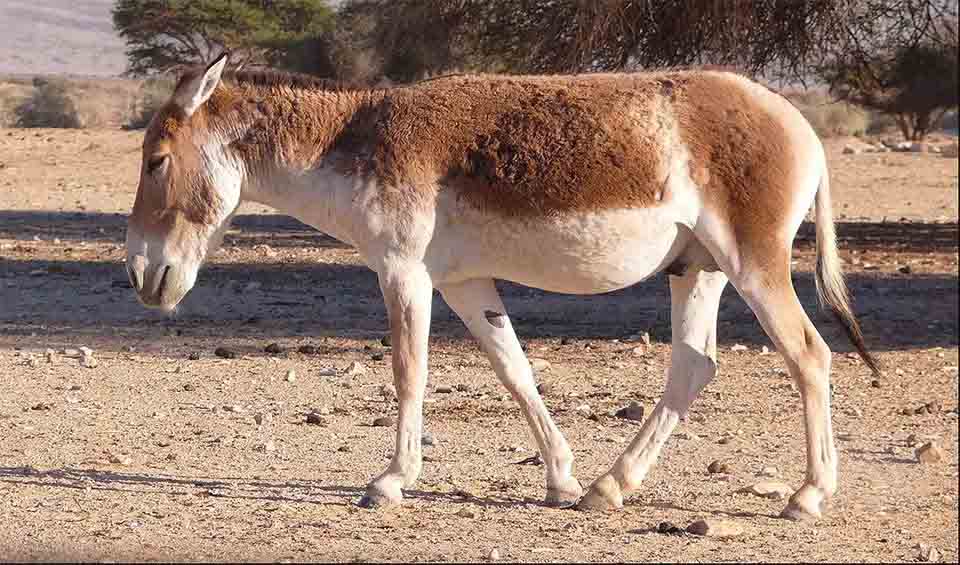Also known as Asiatic wild ass, it represents a fascinating and unique member of the Equidae family, which includes horses, donkeys, and zebras. This large mammal boasts a striking presence in the arid deserts and expansive grasslands of Iran, India, and other Central Asian landscapes. Characterized by distinctive markings, including stripes on their legs and a darker stripe along their back, onagers exhibit a blend of beauty and resilience tailored to their harsh environments.
Adapted to life in some of the most challenging ecosystems on the planet, onagers are herbivores with a diet primarily consisting of grasses, herbs, and other vegetation found in their desert and grassland habitats. Their feeding habits play a crucial role in the ecological balance of these regions, as they help to prevent the overgrowth of vegetation and ensure a diverse and healthy ecosystem. The ability of onagers to thrive in these environments highlights their importance not only as a species but also as a key component of their ecological community.
Despite their adaptability and ecological significance, onagers face an array of threats that have led to a dramatic decline in their populations. Habitat loss, driven by the expansion of agricultural land, urban development, and the degradation of natural landscapes, has significantly reduced their living spaces, fragmenting their populations and making it harder for them to find food and water. Additionally, hunting for their meat and hide, as well as competition with livestock for grazing land, has further endangered their existence.
Distribution
 Afghanistan
Afghanistan Official estimate
Official estimate
 Armenia
Armenia Official estimate
Official estimate
 Azerbaijan
Azerbaijan Official estimate
Official estimate
 China
China Official estimate
Official estimate
 Georgia
Georgia Official estimate
Official estimate
 India
India Official estimate
Official estimate
 Iran
Iran Official estimate
Official estimate
 Iraq
Iraq Official estimate
Official estimate
 Israel
Israel Official estimate
Official estimate
 Jordan
Jordan Official estimate
Official estimate
 Kazakhstan
Kazakhstan Official estimate
Official estimate
 Kuwait
Kuwait Official estimate
Official estimate
 Kyrgyzstan
Kyrgyzstan Official estimate
Official estimate
 Lebanon
Lebanon Official estimate
Official estimate
 Mongolia
Mongolia Official estimate
Official estimate
 Pakistan
Pakistan Russia
Russia Official estimate
Official estimate
 Saudi Arabia
Saudi Arabia Official estimate
Official estimate
 Syria
Syria Official estimate
Official estimate
 Tajikistan
Tajikistan Official estimate
Official estimate
 Turkey
Turkey Official estimate
Official estimate
 Turkmenistan
Turkmenistan Official estimate
Official estimate
 Ukraine
Ukraine Official estimate
Official estimate
 Uzbekistan
Uzbekistan Official estimate
Official estimate
Anything we've missed?
Help us improve this page by suggesting edits. Glory never dies!
Suggest an editGet to know me
Terrestrial / Aquatic
Altricial / Precocial
Polygamous / Monogamous
Dimorphic (size) / Monomorphic
Active: Diurnal / Nocturnal
Social behavior: Solitary / Pack / Herd
Diet: Carnivore / Herbivore / Omnivore / Piscivorous / Insectivore
Migratory: Yes / No
Domesticated: Yes / No
Dangerous: Yes / No






